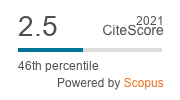A Comparison of the Control Schemes of Human Response to a Dynamic Virtual 3D Face
DOI:
https://doi.org/10.5755/j01.itc.48.2.21667Abstract
This paper introduces the application of predictor-based control principles for the control of human response to a virtual 3D face. A dynamic woman 3D face is observed in virtual reality. We use changing distance-between-eyes in a 3D face as a stimulus – control signal. Human responses to the stimulus are observed using EEG-based excitement signals – output signal. The technique of dynamic systems identification which ensure stability and possible higher gain of the model for building a predictive input-output model of control plant is applied. Three predictor-based control schemes with a minimum variance or a generalized minimum variance control quality and constrained control signal magnitude and change rate are developed. High prediction accuracies and control quality are demonstrated by modelling results.
Downloads
Published
Issue
Section
License
Copyright terms are indicated in the Republic of Lithuania Law on Copyright and Related Rights, Articles 4-37.





